Definition of Short Stories
Short stories fall in the range of about 1,000 to 7,499 words. Due to its brevity, the narrative in a short story is condensed, usually only focusing on a single incident and a few characters at most. A short story is self-contained and is not part of a series. When a number of stories are written as a series it’s called a story sequence.
Note: Short stories are different from
- Novella
- Novelette
- Novels
Elements of Short stories
The 5 basic elements of Short Story Writing are:
- Setting
- Characterisation
- Plot/Structure
- Conflict
- Theme
Setting
The setting is a description of where and when the story takes place. In a short story, there are fewer settings compared to a novel. The time is more limited.
How is the setting created? Consider geography, weather, time of day, social conditions, etc.
What role does setting play in the story?
Study the time period, which is also part of the setting, and ask yourself the following:
- When was the story written?
- Does it take place in the present, the past, or the future?
- How does the time period affect the language, atmosphere or social circumstances of the short story?
Characterization
Characterization deals with how the characters in the story are described. In short stories, there are usually fewer characters compared to a novel. They usually focus on one central character or protagonist.
Characters in a work of fiction can be a (n):
- Protagonist – Clear centre of the story; all major events are important to this character.
- Antagonist – Opposition or “enemy” of the main character
Characteristics of a character can be revealed through:
- His/her physical appearance
- What he/she says, thinks, feels, dreams and what he/she does or does not do
- What others say about him/her and how others react to him/her
Characters can be:
- Round – Fully developed personalities that are affected by the story’s events; they can learn, grow, or deteriorate by the end of the story. Characters are most convincing when they resemble real people by being consistent, motivated, and life-like.
- Flat – One-dimensional character
- Dynamic – Character who does go through change and “grows” during a story
- Static – Character does not go through a change.
Your Short Story should be able to address the following:
- Who is the main character?
- Who or what is the antagonist?
- Are the main character and other characters described through dialogue – by the way they speak (dialect or slang for instance)?
- Has the author described the characters by physical appearance, thoughts and feelings, and interaction (the way they act towards others)?
- Are they static characters who do not change?
- Are they dynamic characters who change?
- What type of characters are they? What qualities stand out? Are they stereotypes?
- Are the characters believable?
- Do the characters symbolize something?
Plot and Structure
The plot is the main sequence of events that make up the story. In short stories the plot is usually centred around one experience or significant moment.
How the author arranges events to develop the basic idea; it is the sequence of events in a story or play. The plot is a planned, logical series of events having a beginning, middle, and end. The short story usually has one plot so it can be read in one sitting. The essential parts of plot:
- Exposition (introduction) – Beginning of the story; characters, background, and setting revealed.
- Rising Action – Events in the story become complicated; the conflict is revealed. These are events between the introduction and climax.
Consider the Following:
- What is the most important event?
- How is the plot structured? Is it linear, chronological or does it move around?
- Is the plot believable?
Conflict:
Conflict or tension is usually the heart of the short story and is related to the main character. In a short story there is usually one main struggle.
There are two types of Conflict:
Internal – Struggle within oneself.
- Character vs. Self – Struggles with own soul, physical limitations, choices, etc
External – Struggle with a force outside one’s self.
- Character vs. Character – Struggles against other people.
- Character vs. Nature – Struggles against animals, weather, environment, etc.
- Character vs. Society – Struggles against ideas, practices, or customs of others
Consider the following:
- How would you describe the main conflict?
- Is it an internal conflict within the character?
- Is it an external conflict caused by the surroundings or environment the main character finds himself/herself in?
Climax:
The climax is the point of greatest tension or intensity in the short story. It can also be the point where events take a major turn as the story races towards its conclusion.
Readers wonder what will happen next; will the conflict be resolved or not? Consider the climax as a three-fold phenomenon:
Consider Climax (cloud nine) as a threefold phenomenon:
- The main character receives new information.
- The main character accepts this information (realizes it but does not necessarily agree with it).
- The main character acts on this information (makes a choice that will determine whether or not the objective is met).
RESOLUTION: The resolution is the end of the story. It focuses on how the conflict is ultimately resolved.
Read – An Introduction to Flash Fiction by Esther Syombua, Kenya
Theme:
The theme is built on a topic, such as death, hope, the American dream, etc. and how the topic affects the human condition, society, or life. As a reader, focus on what the story is revealing about the topic. The theme should be expressed as a statement, a general observation about human nature.
What a theme is NOT:
- a word or phrase (topic or subject)
- a command
- a judgment
To help you write a thematic statement, consider the following:
- What is the story about – its general topic(s) (IE: money, wealth, death, etc.)?
- How is the topic developed? (Consider how characters change, symbols, climax, etc.)
- Do you notice any patterns in imagery, diction, etc.?
- Does the title have any significance?
- Does the narrator or character include any statement(s) that reveals a theme or observation?
Flash Fiction
Flash fiction is generally used as an umbrella term that refers to super short fiction of 1,000 words or less, but still provides a compelling story with a plot (beginning, middle, and end), character development, and usually a twist or surprise ending.
Types of Flash Fiction:
Six-word Flash Fiction
Yes, it’s possible to write a complete story with conflict and resolution in six words. The most well-known example of a six-word story, often misattributed to Ernest Hemingway, is, “For sale: baby shoes, never worn.” Every detail is in the 6 words if you can give it time and go through it. Remember, be imaginative.
Dribble/Mini-saga
When writing a drabble isn’t challenging enough, you can try your hand at writing a dribble, which is a story told in exactly 50 words.
Drabble
Drabble is a story of exactly 100 words (not including the title). Just because the form is short doesn’t mean you can skimp on the basics of a good story. It should have a beginning, middle, and end, and include conflict and resolution.
Sudden fiction/Short-Short-Stories
The terms sudden fiction and short stories refer to longer pieces of flash fiction, around 750 to 1,000 words. However, the definition varies and may include pieces up to 2,000 words, such as in the series that helped popularize the form, Sudden Fiction and New Sudden Fiction.
Twitterature
This one has a maximum of 280 words. It’s not common though.
In Conclusion
Writing both types of stories requires writing that is clear, tight and concise.
To get that tightness, cut unnecessary descriptions, get rid of adjectives and adverbs, remove the word “that” and other empty words, and eliminate details that don’t matter. What may start as a short story can become flash fiction, or a short story, through the slashing of the unnecessary.
With both short stories and short shorts, show, don’t tell with the action. You want the reader to get in and get out and the emotional impact of what you’ve written to resonate beyond the words. Quick and short, they can have that lasting power.
Neo Space-Poet Masetlane is the President of Writer Space Africa- Botswana, the Head of News Team -WSA, and is an Editor, Poet, and Ghostwriter. He writes short stories, poems, and movie scripts. He also Also specialize in editing and proofreading. He is the editor of essays and articles for Writers Space Africa magazine.
is the President of Writer Space Africa- Botswana, the Head of News Team -WSA, and is an Editor, Poet, and Ghostwriter. He writes short stories, poems, and movie scripts. He also Also specialize in editing and proofreading. He is the editor of essays and articles for Writers Space Africa magazine.







